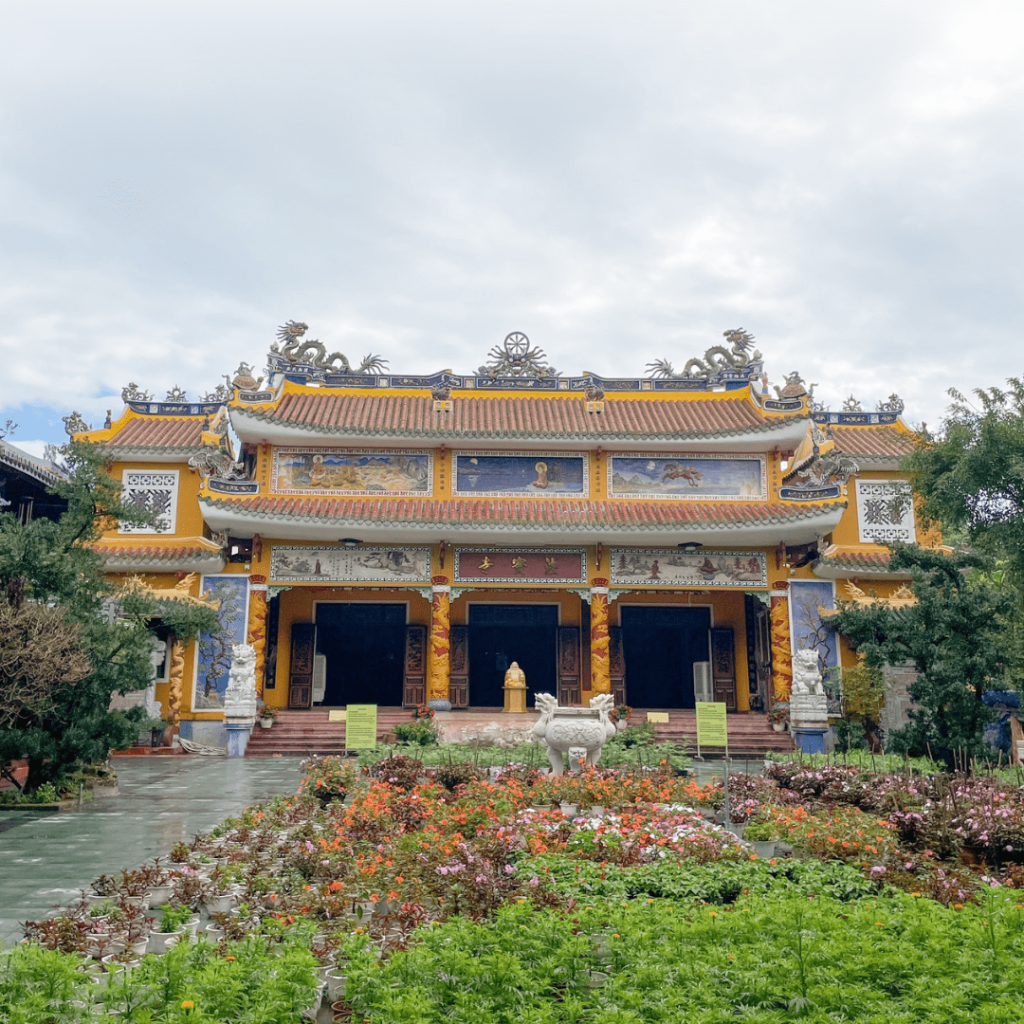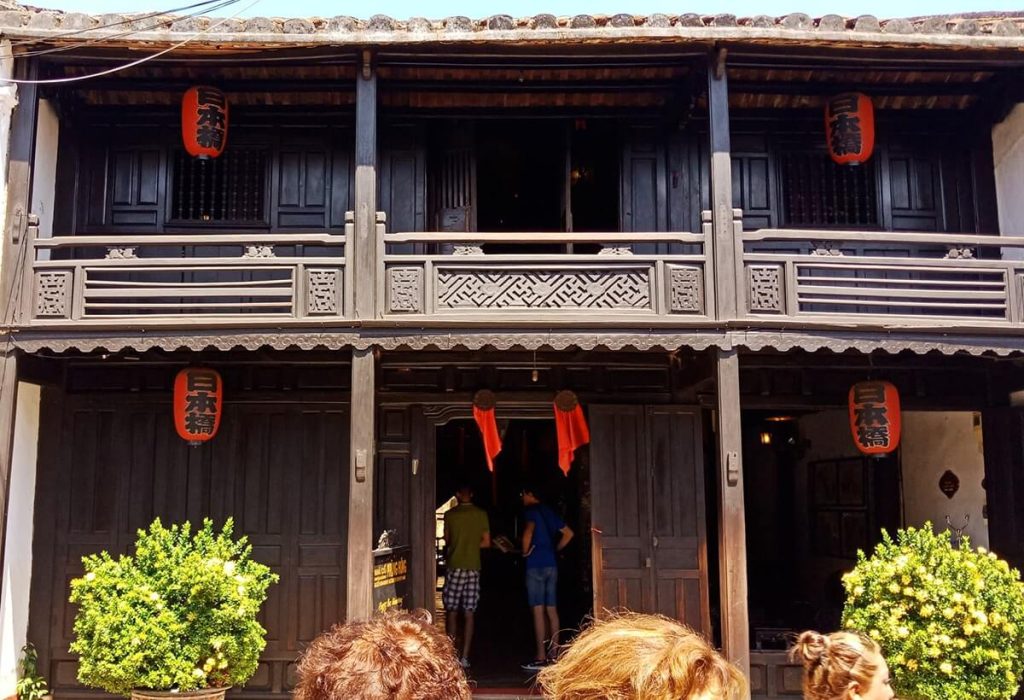Discover The Top 6 Must-Visit Places In The Walking Tour Hoi An
Nowadays, Hoi An stands as a testament to its past glory, with its Old Town showing a harmonious blend of Vietnamese, Chinese, Japanese, and European influences. If you want to have a great view about Hoi An culture as well as the history of Hoi An. Let’s discover The Top 6 Must-Visit Places In The Walking Tour Hoi An throughout this article now!
Overview Of The Walking Tour Hoi An
The walking tour or free walking tour was created by The Hoianese Hotel, which showed the value of guests the hidden charm and cultural significance of Hoi An Ancient Town. The walking tour is led by a Hoianese local tour guide – who is wholeheartedly passionate about Hoi An. The walking tour is a fantastic way to immerse yourself in the city’s rich history, spirituality, culture, and architecture.
The List of Top 6 Must-Visit Places
Here are some of the must-visit places you will discover in Hoi An:
1. The Phap Bao Pagoda
Nestled amidst the enchanting streets of Hoi An, Vietnam, lies the serene and spiritually enriching Phap Bao Pagoda. This ancient temple stands as a testament to the rich cultural and religious heritage of the region, drawing visitors from far and wide to bask in its tranquil ambiance and explore its profound history.

Stepping through the gates, visitors are enveloped in a sense of serenity that permeates the air. The gentle scent of incense wafts through the temple grounds, mingling with the soft murmurs of prayers and the distant sound of ringing bells. Here, amidst the tranquil surroundings, one can’t help but feel a deep sense of peace and introspection. Phap Bao Pagoda offers a sanctuary for the soul, a place where the sacred and the sublime converge in perfect harmony.
2. The Ba Mu Temple Gate
Ba Mu Temple Gate, standing proudly amidst the ancient charm of Hoi An, Vietnam, serves as a timeless portal to a realm of spiritual reverence and historical significance. As one approaches the gate, an aura of mystique envelops the surroundings, drawing visitors into a world where the past intertwines seamlessly with the present.

Moreover, Ba Mu Temple Gate stands as a poignant reminder of the interconnectedness of humanity, transcending boundaries of time and space to unite individuals in a shared appreciation for the cultural legacy it represents. In the bustling streets of Hoi An, where the past converges with the present, Ba Mu Temple Gate stands as an emblem of resilience, perpetuating the legacy of a bygone era while embracing the winds of change that sweep through the ancient town

3. The Bon River
The Thu Bon River is more than just a body of water; it embodies the essence of cultural heritage, economic vitality, and ecological importance. Spanning approximately 120 kilometers from its source in the Annamite Range, the Thu Bon meanders through lush green landscapes, connecting rural communities and bustling urban centers alike.

Moreover, the river sustains a rich ecosystem teeming with diverse flora and fauna, serving as a vital habitat for numerous species and supporting the livelihoods of local fishermen and farmers who depend on its resources for sustenance. The Thu Bon River is not without its challenges, as urbanization, pollution, and climate change threaten its fragile ecosystem and the communities that rely on it.
4. The Fujian Assembly Hall
The Fujian Assembly Hall, also known as the Phuc Kien Assembly Hall, embodies the essence of Fujianese craftsmanship and religious devotion, serving as a focal point for both spiritual worship and communal gatherings. Its origins trace back to the late 17th century when Fujianese merchants and traders established Hoi An as a bustling international trading hub along the Silk Road of the Sea.

The Fujian Assembly Hall stands as a symbol of Hoi An’s rich multicultural heritage, attracting tourists and scholars alike from around the world to marvel at its beauty and delve into its storied past. In essence, the Fujian Assembly Hall is not merely a monument of stone and mortar but a living testament to the enduring spirit of a community bound by faith, tradition, and shared history.
5. The Japanese Bridge
The Japanese Bridge is a priceless symbol of Hoi An Ancient Town. The Japanese Bridge is a living testament to the profound influence of Japanese culture in this enchanting town. It was born more than 400 hundred years ago on the initiative of the Japanese community in Hoi An.The Japanese Bridge represents a tangible link between two distant lands, bridging not only physical divides but also cultural and commercial exchanges.

Its graceful curves and intricate design reflect the meticulous craftsmanship of both Japanese and Vietnamese artisans, blending elements of Japanese pagoda architecture with local influences. Over the centuries, the bridge has weathered the ravages of time and nature, bearing witness to the ebb and flow of history while remaining a steadfast symbol of resilience and endurance.
6. The Phung Hung Ancient House
The Phung Hung Ancient House stands as a timeless testament to the rich cultural heritage and architectural marvels of Vietnam. This ancient house embodies the essence of Vietnamese tradition, offering a captivating glimpse into the country’s storied past. From the opulent reception hall adorned with lacquered furniture and embroidered silk screens to the intimate family altar room adorned with ancestral portraits and incense offerings, every corner of the Phung Hung Ancient House tells a story of a bygone era, preserving the cultural legacy of generations past.

Whether marveling at its exquisite architecture, exploring its hidden alcoves, or simply soaking in the tranquil ambiance of its courtyard, a visit to the Phung Hung Ancient House is sure to leave a lasting impression, weaving a tapestry of memories that will endure for years to come.
Things To Notice:
- The tour is free and guided
- Please preserve in advance to make sure you have slots. Only a small group (Max 12 pax for quality control)
- An entrance ticket is required (120.000 VND/ 1 Ticket / Must)
- Local iced tea 16.000 VND (optional)
- Local noodles for lunch 40.000 VND (optional)
- You can tip the tour guide after the tour, depending on how satisfied you are (optional)
- Please only sign up when you’re sure to attend
- Please wear proper clothes ( not too revealing since we are visiting sacred local places)
Conclusion
Through the walking tour you will get a more holistic view of the East Asian cultural sphere, a deep understanding of Hoi An history, Vietnamese culture, and the cultural fusion among Japan, China, and Vietnam in Hoi An.
At the end of the walking tour, you will have a chance to ask the tour guide to answer all the questions and concerns you may have before the tour ends. Joining the FREE walking tour by Hoianese Hotel to discover the top 6 must-Visit places in Hoi An now!





6 Comments